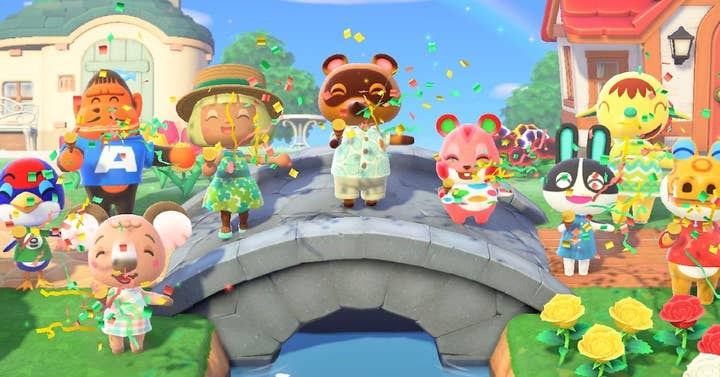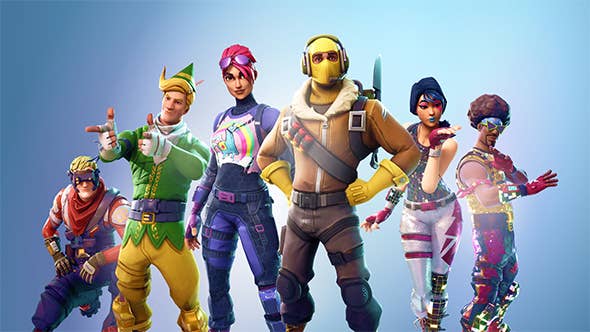Why kids aren't just playing kids' games anymore and what that means for developers | Opinion
Kids Industries' Raj Pathmanathan discusses the different needs of younger and older players, and how to appeal to both
The key components of all games -- whether card games, board games, playground games or video games -- are universal: goals, rules, strategy, challenge and interaction.
What's even more interesting is that these components apply to all ages, which is one reason we have recently witnessed a glut of video games that were probably not designed with kids in mind but have, nonetheless, ended up becoming huge hits among that age group.
This trend of unintentional, intergenerational gaming has also been powered by advances in technology, especially internet access, and the introduction of new gaming formats. The mobile boom in the early noughties, for example, made games accessible for all ages, all the way from pre-schoolers up to grandparents. Then more new platforms arrived, including iPads, giving us access to gaming on the go with bigger screens, and online metaverses, which expanded the horizons massively when it came up multiplayer experiences.

The change in the app stores' focus on gaming also created a huge boom in gaming for children because publishers were forced to categorise their games by audience. But rather than this leading to kids playing kids' games, and adults sticking to over 18 titles, what we actually saw happen was 'good games' being discovered, played and loved by everyone and the likes of Clash of Clans, Angry Birds and Candy Crush becoming huge gender-neutral, multigenerational hits.
When gaming platforms then started talking to each other, we said hello first to multiplatform gaming, and then to omnichannel gaming experiences. In a similar vein to the frictionless Netflix experience we all love, we could now play Fortnite on a phone and then carry on playing with the same account (and against the same players) on an iPad, desktop or console. This made games more accessible, multiplayer possible, and multigenerational play inevitable.
Introducing age-agnostic gaming
Of course, not all good games are developed for or played by all ages. There are games that are developed specifically for certain age groups. Pre-schoolers can be found playing Paw Patrol, Sesame Street, Peppa Pig and many other interactive games oftentimes based on popular licenses. Then there's the likes of GTA and Call of Duty for the over 18s. This is all wonderful, and there is no suggestion on my part it should or will ever change. But what we're seeing is this huge band in the middle of the age-appropriate spectrum, where games have been developed to be age-agnostic and are successfully appealing to all ages.
Gaming has now amalgamated with socialising for children and there is social status to be achieved by playing online games with other kids
Nintendo's Animal Crossing is a great example. Not only are my colleague's sister (42) and her son (12) competing and collaborating on this game every day, but mum also bought her Switch for that sole purpose. We're also hearing about 10-year-olds playing 30-year-olds on a level playing field in Fortnite and Roblox, and adults getting gooey over (seemingly child-focused) Kawaii content like Sanrio's Hello Kitty.
In my opinion, the cross generational appeal of gaming mirrors what's been happening in the music industry. Kids are listening to grime acts like Stormzy -- who, given his intention is to speak to an adult audience, doesn't hold back with his use of explicit lyrics and profanities -- and many millions of adults around the world are diehard fans of the likes of Taylor Swift, Harry Stiles and One Direction.
Kids are the biggest socialisers
Music, gaming, movies, streaming content -- categorised simply, they're all just forms of entertainment and they are all very much integrated into our social lives, our socialising and our need for connections. It's just that, while music may have defined the milestones of growing up as a baby boomer or Generation X, gaming is now the culture point of reference for Generation Z and -- more importantly -- Generation Alpha (2010 onwards).
Online gaming allows kids to socialise and play with friends old and new beyond the watchful eyes of parents, which is really important to them for relationship development. Gaming has now amalgamated with socialising for children and there is social status to be achieved by playing online games with other kids.

According to Bartle's Taxonomy of Player Types -- which is based on a 1996 paper by games research Richard Bartle and categorises gamers into four groups: Achievers, Explorers, Socialisers and Killers -- socialisers are the most common. In fact, 80 per cent of gamers are socialisers. These players gain the most enjoyment from a game by interacting with others and they view the games as merely a tool for meeting other people either in-game or in-person. Socialisers delight in interactions with other players and this interactive pining is very well served by today's online playing community.
From chat to party modes, socialisers -- whether children or adults -- need games to have an interactive representation of others. Even before the pandemic, this was an obvious and charted trend. Since the pandemic, throughout which we have been starved of so many real-life connections, the ability for games to offer a social element as well as great gameplay, challenges, rewards and aesthetics is becoming increasingly important.
The industry must shoulder the responsibility for ensuring games are suitable for everyone that's playing them, including people of all ages
This isn't a new thing. Look at Club Penguin -- that was a virtual social world designed specifically for children. But the difference is it was a world developed for kids and kids alone, so there was a real focus on duty of care, safety and responsibility to the gamers it was targeting. These days, many social games are developed to be universal. And that in itself raises a whole number of issues for developers, not just from a safety point of view, but from a moral and ethical one too.
What the rules for developing kids' games?
When it comes to developing games, apps or any other digital content for kids, there is no government legislation or direction dictating what we can and cannot do. The upside is the freedom this gives creatives. The downside is that the industry must shoulder the responsibility for ensuring those games are suitable for everyone that's playing them.
That means taking moral and ethical responsibility for everything in the game; from a consideration of the educational benefits to the biological development of the child playing, and more specifically in relation to monetisation, data, rewards and addiction.
If we take Candy Crush as an example -- we know there are elements in puzzle games like this that sometimes use the same type of motivation/reward structure as the gambling industry, which is obviously heavily regulated and restricted to over 18s. Is it wrong for Candy Crush to use those psychological triggers? Or should we be labelling it an 18-plus title? And how would you keep it out of the hands of kids anyway, when it can be downloaded for free and so many of them have smartphones?

Well, if you're developing specifically for kids rather than a title that may be played by them, then there are several issues to bear in mind. For pre-schoolers, developers really need to consider their physical and biological limits and focus on recreating toy play patterns so they can replicate digital play in the physical space. Repetition is also important for pre-schoolers as it helps them to learn and develop educationally.
As they get older, games often focus on creating offline product purchasing play patterns. So, a six-year-old may watch other people play Fortnite rather than play it themselves, but it's at this age that they also start to make brand connections, experience feelings of identity and belonging, and develop aspirations for owning associated merchandise.
A 6-year-old may watch other people play Fortnite rather than play it themselves, but it's at this age they also start to make brand connections, and experience feelings of identity and belonging
It's around the same age -- 6 or 7 -- when kids also really start getting into collecting and Pokémon does a brilliant job of motivating them to keep going until they 'catch 'em all.' At that age, they are more likely to play games on iPad and Mobile. They're not bothered by the restrictions of the technology or the screen size -- their mantra is 'more is more' and would rather have access to 500 short, low quality games than one amazing, 40-hour blockbuster.
Adults, however, are more likely than kids to play on consoles, and if they are forking out for a console, they will want the whole cinematic experience you'd expect from a next-gen title played on a big screen.
But kids are more attracted by quick wins and quick rewards. Children can learn and adapt to new rules quickly if we can get their motivation right. The younger the audience, the quicker the gratification and, as they get older, the motivations and rules can work on multiple layers.
Kids also value social currency. They want to be able to show off to their mates. Look at astronomical successes of Pokémon Go and (again) Animal Crossing, both are perfect examples of this.
When it comes to monetisation, kids and adults differ here, too. Kids are motivated by customisation -- skins, avatars, characters, emoticons. They want everything to be personalised to them or their 'gang' -- it ties back to harbouring a need for collective identity that I mentioned earlier.
Adults, on the other hand, are more likely to spend in-game currency on convenience. We don't have time to wait around for dinosaur eggs to hatch or houses to be built, we want to move through the game as quickly as possible and are happy to chuck money at it to make that happen.
But even taking into account the differences between the under and over 18s, the real answer to how do you develop a game for kids is (and hopefully I've illustrated it well in this article) you don't; you simply need to focus on creating a great game with the right story, rules, reward structure, aesthetics and duration that will appeal across the ages, while assuming that kids will play your game and adapting it accordingly.
So, what IS a good game?
A good game should stretch across ages, be multiplatform and platform agnostic. It should provide opportunities for social hang outs as more and more children are turning to games as a place to hang out, compete against and collaborate with their friends.
Perhaps in the future, all games will be developed to have universal appeal and adults are the secondary audience who we appease with limited edition adult-only add-on packs, directors cuts or spin-off content. But, in this future, it's the kids who will come first.
Raj Pathmanathan is creative director at Kids Industries, a research, strategy and creative agency that specialises in the family and kids markets.
